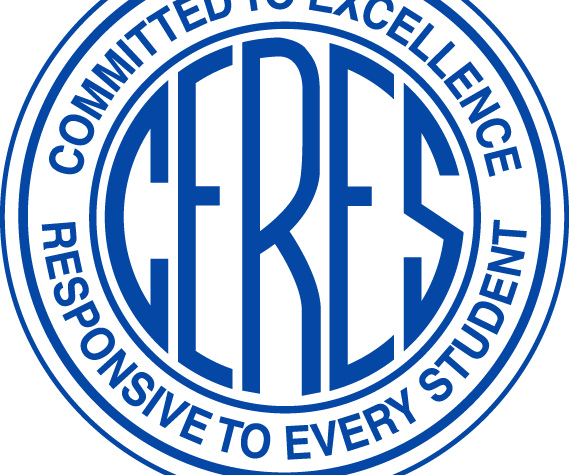State Assemblyman Adam Gray, D-Merced, dropped by Ceres High School on Monday to check out the Manufacturing Production and Green Energy Academy and expressed that it was one of the best programs he has seen to prepare high school students for the work world.
The high school decided to scrap its wood shop program in 2008 since there was little demand for wood-working skills in the Stanislaus County jobs market. CHS officials spoke to local firms and asked what skills they were seeking in workers and decided to craft a new academy of classes to prepare graduates for technological knowhow to get jobs.
"I wouldn't want to take all these kids out in the workforce if there was no workforce," explained teacher Chris Van Meter to Gray. "That's the whole idea of the program. We're going to kick them to school, kick them to MJC or kick them over to the workplace."
Gallo Winery was very instrumental in helping CHS understand what manufacturers are seeking. Ceres Unified School District sought state grant funding and built the $1 million academy.
Gray asked why all high schools weren't offering a similar program. That prompted Assistant Supt. Jay Simmonds to reply with a smile: "Because Ceres is better." He then explained that other schools have their own specialty academies, such as Modesto with its health academy. But each school must have the vision, secure the money, build the infrastructure and start the dialogue with local manufacturers. Some schools are caught in tradition, such as offering auto theft, as the reason for lack of change, said Simmonds.
Last year the Academy placed about 200 students in local manufacturing jobs, such as at Gallo, Frito Lay and Seneca Foods.
"They were pretty much guaranteeing all of our students space," said Van Meter.
Simmonds said CHS is looking to double its program. But as the program grows, other electives have to shrink.
"The pie of kids is the same size," said Simmonds, "so if we double the size of manufacturing, either ag is going to shrink, music is going to shrink - it has to come out of another elective area so you've got to balance that too."
The CHS academy has 162 students but Van Meter said he needs more access to kids.
"We are taking probably about 10 percent of the population on this campus, making them Academy kids ... the cold hard fact is only 35 percent of these kids at this school are going onto college so what do we do with those other 65 percent of the kids? We need to give them good employable skills so we can do a model like this where we're working with them every day on employable skills."
Gray commented that he attended a recent conference where leaders noted that if 70 percent of high school grads aren't going onto get a four-year degree why is 95 percent of the effort on gearing kids in that direction.
"This is moving definitely in the right direction," said Assemblyman Gray. "This is one of the best examples I've seen."
Simmonds said CUSD still is preparing its graduates to go to college because many manufacturing jobs require a college education and because not all kids will be headed to manufacturing jobs.
"I just would rather see them as an engineer than work the floor," said Simmonds. "We need the guys and gals in the program make that decision at 18, and not 14."
Gray said it's important for schools to crank out grads who are well equipped to take local jobs, noting how a federal prison in Merced County came in but the local area could not fill the jobs with qualified people.
"There should be some connection between the K-12 education, the JCs, the CSUs and the UCs and our industries," said Gray.
Simmonds replied that getting them all to talk is "not easy."
Van Meter said that the academy has made the investment with local partners to sustain the program. But a question remains if there will be long-term sustenance as it relates to state funding since CHS is using a Partership Academy Grant of $138,000 annually for the extras, such as taking students on field trips.
Once CHS started the academy it eventually branched out into green technology with seniors now installing solar systems on homes of low-income residents. A new program has 20 students teaming up with local industries, such as Parker Hannifan which operates the Racor plant just north of Ceres, to perform energy audits and analyze the cost-effectiveness of switching to solar.
"I'm so excited what ya'll are doing," said Gray. "It looks like you're doing a great job."
"This is my favorite class out of all six periods," replied senior Ethan Campbell. "I love this class."
The Merced Democrat said he would like to return to CHS to see what steps were necessary to connect to local manufacturers to help other districts replicate the program.





